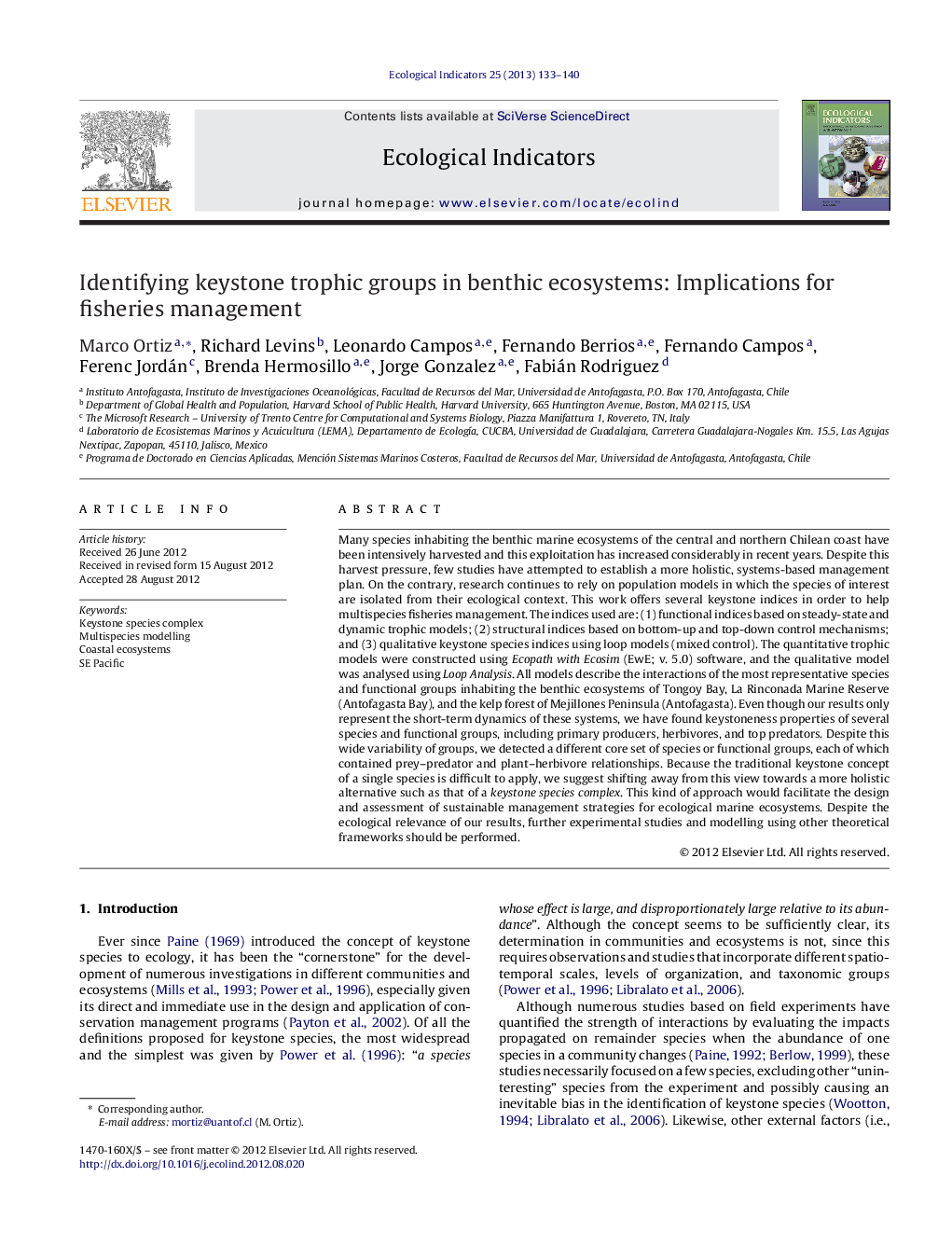| Article ID | Journal | Published Year | Pages | File Type |
|---|---|---|---|---|
| 4373593 | Ecological Indicators | 2013 | 8 Pages |
Many species inhabiting the benthic marine ecosystems of the central and northern Chilean coast have been intensively harvested and this exploitation has increased considerably in recent years. Despite this harvest pressure, few studies have attempted to establish a more holistic, systems-based management plan. On the contrary, research continues to rely on population models in which the species of interest are isolated from their ecological context. This work offers several keystone indices in order to help multispecies fisheries management. The indices used are: (1) functional indices based on steady-state and dynamic trophic models; (2) structural indices based on bottom-up and top-down control mechanisms; and (3) qualitative keystone species indices using loop models (mixed control). The quantitative trophic models were constructed using Ecopath with Ecosim (EwE; v. 5.0) software, and the qualitative model was analysed using Loop Analysis. All models describe the interactions of the most representative species and functional groups inhabiting the benthic ecosystems of Tongoy Bay, La Rinconada Marine Reserve (Antofagasta Bay), and the kelp forest of Mejillones Peninsula (Antofagasta). Even though our results only represent the short-term dynamics of these systems, we have found keystoneness properties of several species and functional groups, including primary producers, herbivores, and top predators. Despite this wide variability of groups, we detected a different core set of species or functional groups, each of which contained prey–predator and plant–herbivore relationships. Because the traditional keystone concept of a single species is difficult to apply, we suggest shifting away from this view towards a more holistic alternative such as that of a keystone species complex. This kind of approach would facilitate the design and assessment of sustainable management strategies for ecological marine ecosystems. Despite the ecological relevance of our results, further experimental studies and modelling using other theoretical frameworks should be performed.
► Functional and topological model keystone indices were used. ► A core of species related ecologically with keystoneness properties were found. ► We suggest to use a more holistic view such as keystone species complex. ► Our results are usefully to design multispecies management strategies for fisheries.
